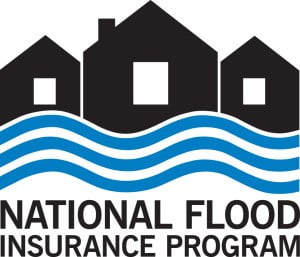 For the last several years the National Flood Insurance Program (NFIP) has experienced periods of expiration and availability of issuance policies. Each time Congress would pass a temporary bill extending the program for another short period. Finally a bill was introduced that would extend the program for 5 years and not have these continued interruptions. What we didn’t know existed in the several thousand pages of The Biggert-Water Act of 2012 were the changes in premiums and coverage that I will highlight below.
For the last several years the National Flood Insurance Program (NFIP) has experienced periods of expiration and availability of issuance policies. Each time Congress would pass a temporary bill extending the program for another short period. Finally a bill was introduced that would extend the program for 5 years and not have these continued interruptions. What we didn’t know existed in the several thousand pages of The Biggert-Water Act of 2012 were the changes in premiums and coverage that I will highlight below.
- First, these changes are not being imposed by FEMA or by the NFIP. These are legislative changes from Congress that can be undone by Congress with the right voices being heard.
- Starting January 1, 2013, any non-primary resident home that was built before flood maps were instituted (this is called Pre-FIRM) will see an increase in their premiums as the “discounts/subsidies” are removed.
- Starting August 1, 2013 commercial properties will have their subsidies/discounts removed and the new premium in place 25% per year for 4 years. For example, if the NEW, non-discounted premium is $5,000 per year and the old premium was $500 per year, the difference is $4500. The increase of the $4500 will apply 25% at a time over the next 4 years until the full premium of $5,000 is paid.
- Starting August 1, 2013, subsidies will be similarly phased out at 25 percent a year for severe repetitive (more than 4 claims) loss properties consisting of 1-4 residences, and properties that have incurred flood-related damages where claims payments exceed the fair market value. FYI – Severe Repetitive Loss means four or more claims payments of over $5,000 or two claims that exceed the value of the property.
- New policies written on pre-FIRM buildings (primary or non-primary residence) due to a sale or deliberate lapse will be issued at full-risk rates. THERE IS NO MORE GRANDFATHERING! Prior to the bill being passed, the flood map zone in effect at the time of construction remained with the house when it was sold.
- Beginning in 2014, premium rates for other properties, including non-subsidized properties – such as PRIMARY RESIDENCES AND SECOND HOMES BUILT AFTER 1974 – will increase as new or revised flood maps become effective. We are expecting new flood maps the latter part of 2014. This is not far off folks!
- Full risk rates will be phased in at 20% a year for five years for these properties. While FEMA works through the grandfathering issue on primary residences, they have removed the 2-year policy limit for the Preferred Risk Policy Extension until the new rates are implemented.
- When new flood maps become effective, they will include a rating for a new zone – a Coastal A Zone. This zone will affect areas behind the V-zone and other areas that experience a limit of wave action from 3 ft. to 1 ½ ft. For insurance purposes, a policyholder pays to the zone that touches his structure.
- Increases the limit for annual rate increases within any risk classification of structures from 10 percent to 20 percent. This means they can now raise your premium by 20% a year, anytime they deem necessary.
- Minimum annual deductibles on claims are changed to $1500 for coverage up to $100,000 and $2000 for coverage over $100,000 for pre-FIRM properties, and $1,000 and $1,250 for below and above $100,000 coverage for post-FIRM properties.
- Requires FEMA to notify property owners when their properties are included in, or are removed from, an area covered my mandatory insurance purchase requirements. Also requires notification of Senators and House Members whose States or Districts are affected by map changes.
- The Biggert-Waters Act of 2012 was included in H.R. 4348 – Surface Transportation Act found at http://www.gpo.gov/fdsys/pkg/BILLS-112hr4348enr/pdf/BILLS-112hr4348enr.pdf starting on page 512.
- You can help a Non-Profit coalition spearheading a movement on revising this bill by taking a quick survey about your current insurance http://www.uphelp.org/home-insurance-cost-and-quality-survey Your help is greatly appreciated!
These changes, if left in place, will have an impact on the local value of your property during a re-sale on the Outer Banks.
Please contact me with any questions you have regarding this. You can also contact your insurance agent to find out exactly what changes you can expect to your specific premiums. If you need information for another insurance agent, I’ll be happy to share the name of a trusted professional I work with regularly.




